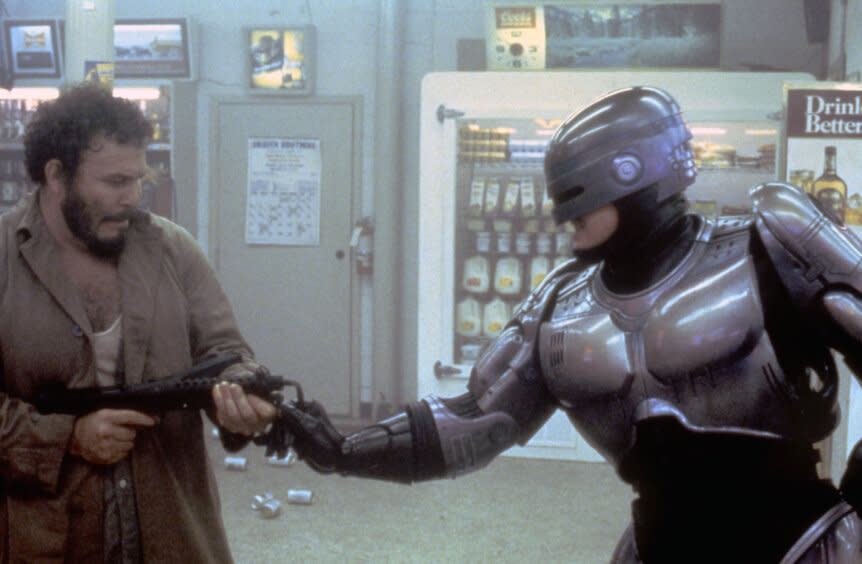Printing People: Scientists Successfully 3D Print Engineered Skin with Hair Follicles
- Oops!Something went wrong.Please try again later.
- Oops!Something went wrong.Please try again later.
Somewhere in Detroit in the not-so-distant future, police officer Alex Murphy (Peter Weller) is killed on the job, his corpse recovered, and shuffled into an experimental procedure to turn him into the ultimate crime fighter. After his untimely death, Murphy gets taken apart and put back together again, his biology replaced with machinery, to become the titular RoboCop.
Murphy recovers some portion of his humanity, but he never gets his good looks back. Which is one of the reasons real world scientists are working so hard to build better and more complete artificial skin. Recently, a team of researchers succeeded for the first time in crafting engineered skin complete with hair follicles. The results were published in the journal Science Advances.
The First Artificial Hair Follicles in Artificial Skin
Scientists have been working for a while on engineered human skin, but it’s harder than it might look. While skin appears to be a rather uniform organ of tissue, it is actually deceptively complicated, made of various layers and tissue types all working together. To date, attempts to create complex structures like hair follicles have been unsuccessful. Until now.
RELATED: Future Robots Could Wear Suits Made of Human Skin
“The reconstruction of hair follicles using human-derived cells has historically been a challenge. Some studies have shown that if these cells are cultured in a three-dimensional environment, they can potentially originate new hair follicles or hair shafts, and our study builds on this work,” said Pankaj Karande, study author, in a statement.

Peter Weller on the set of 'RoboCop,' directed by Paul Verhoeven. Photo: Orion Pictures Corporation/Sunset Boulevard/Corbis via Getty Images
Researchers from Rensselaer Polytechnic Institute began by culturing hair and skin cells in the lab until they had enough to work with. Then they mixed the cells with proteins to create a bio-ink which could be run through a specialized 3D printer. Next, they printed the skin one layer at a time, leaving empty channels behind in which to deposit hair cells. Over time, skin cells migrate into the vacant channels, surrounding the hair cells and mimicking a follicle.
The resulting engineered tissue developed follicle-like structures which were supported by the ordinary migration of skin cells. In addition to the aesthetic value of hair-covered artificial skin for the Alex Murphys of the world, follicles do other important biological work. They produce sweat and otherwise help regulate body temperature.
RELATED: Paralyzed Man Walks Again in Huge Step for Neural Implant Therapies
Complex engineered skin has obvious medical applications, particularly with regard to skin grafts, and researchers note additional commercial applications. Many topical compounds interact with the follicles, but initial testing often takes place on simple skin analogs. These more complex artificial tissues might provide more robust first-level testing.
At present, the work is limited by the short lifespan of the engineered tissues. Right now, they only survive for a couple of weeks, not long enough for a shaft of hair to actually grow. For now, all we know is the tissues appear to organize themselves as if they are building hair follicles. Future research will focus on extending the lifespan of engineered tissues to push the process further. Researchers hope to have workable engineered skin with hair follicles included in the next several years. By the time Alex Murphy actually becomes the RoboCop, scientists may actually be able to give him a good head of hair.
Catch the continued adventures of RoboCop in RoboCop: The Series, streaming now on Peacock.

